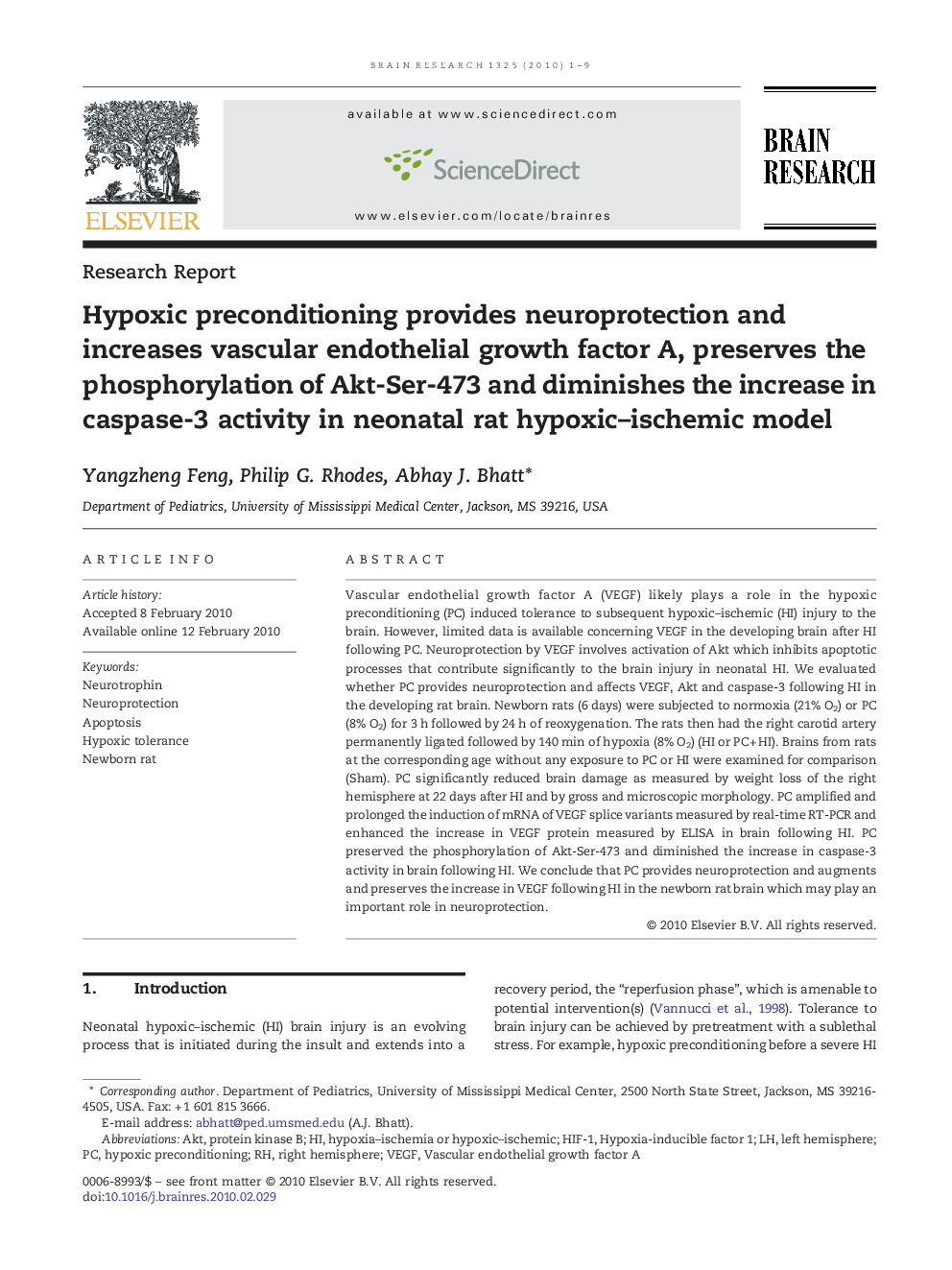| Article ID | Journal | Published Year | Pages | File Type |
|---|---|---|---|---|
| 4327188 | Brain Research | 2010 | 9 Pages |
Abstract
Vascular endothelial growth factor A (VEGF) likely plays a role in the hypoxic preconditioning (PC) induced tolerance to subsequent hypoxic-ischemic (HI) injury to the brain. However, limited data is available concerning VEGF in the developing brain after HI following PC. Neuroprotection by VEGF involves activation of Akt which inhibits apoptotic processes that contribute significantly to the brain injury in neonatal HI. We evaluated whether PC provides neuroprotection and affects VEGF, Akt and caspase-3 following HI in the developing rat brain. Newborn rats (6Â days) were subjected to normoxia (21% O2) or PC (8% O2) for 3Â h followed by 24Â h of reoxygenation. The rats then had the right carotid artery permanently ligated followed by 140Â min of hypoxia (8% O2) (HI or PCÂ +Â HI). Brains from rats at the corresponding age without any exposure to PC or HI were examined for comparison (Sham). PC significantly reduced brain damage as measured by weight loss of the right hemisphere at 22Â days after HI and by gross and microscopic morphology. PC amplified and prolonged the induction of mRNA of VEGF splice variants measured by real-time RT-PCR and enhanced the increase in VEGF protein measured by ELISA in brain following HI. PC preserved the phosphorylation of Akt-Ser-473 and diminished the increase in caspase-3 activity in brain following HI. We conclude that PC provides neuroprotection and augments and preserves the increase in VEGF following HI in the newborn rat brain which may play an important role in neuroprotection.
Keywords
Related Topics
Life Sciences
Neuroscience
Neuroscience (General)
Authors
Yangzheng Feng, Philip G. Rhodes, Abhay J. Bhatt,
